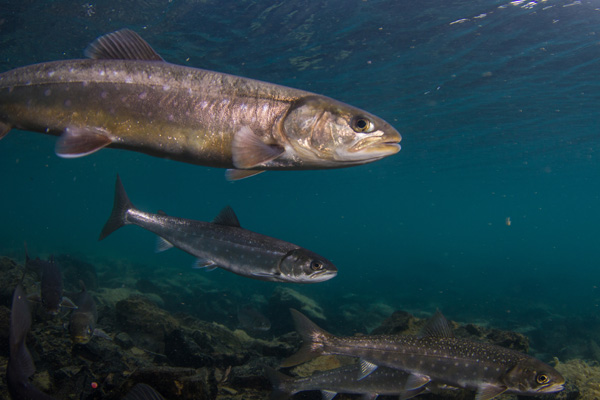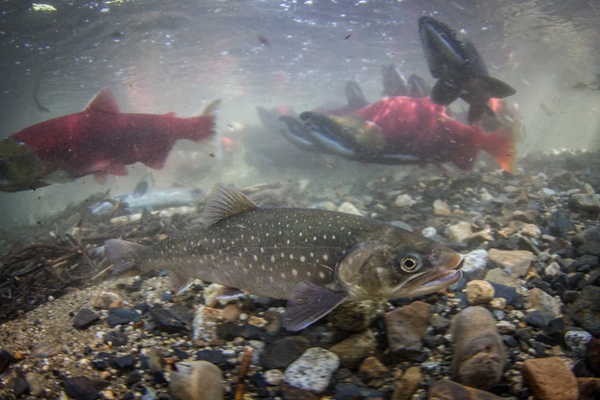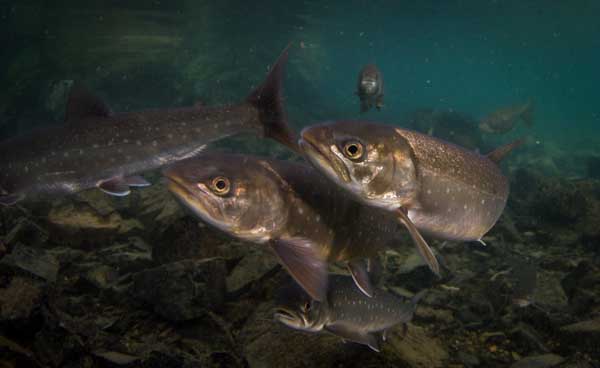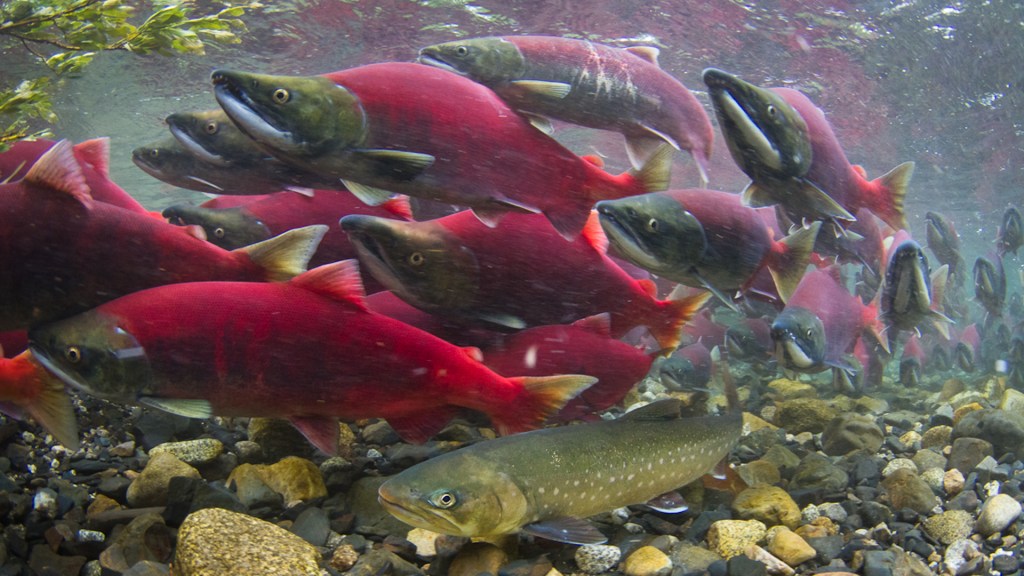The bottom line: A new study in one Southeast Alaska drainage finds that the migration of predatory char has remained in synch with Pacific salmon that have changed their migration patterns due to a warming climate. It is one of the first documented instances where migratory predator and prey have remained in synch in the face of climate change-induced phenology changes.
Animals that change their patterns due to a changing climate often find themselves out of synch with their food source.
Studying these changes – known as phenology — is a frequent inquiry of climate change research.
A bird migrates north earlier but trees have not begun fruiting. A caribou moves to its summer feeding ground only to find nutritious grasses have already sprouted.
A new article in the journal Freshwater Biology, though, documents one instance where salmon have altered their migration habits in a warming water basin, and one of their main predators has altered its migration to match the change.
They looked at the Auke Creek drainage, where salmon have significantly changed their migration timing over the past four decades.
Dolly Varden – a char species and predator of salmon eggs – appears to have synched its migration to match the changing salmon migration.
The Prey: Migrating Salmon
The paper’s authors – Chris Sergeant, Jonny Armstrong and Eric Ward – looked at Pacific salmon migrations in the Auke Creek drainage of Southeast Alaska.
It is the perfect location for such a study, as a weir (fish trap) has been in place on the creek since 1980.
“Since the weir was established, every fish that has migrated past that weir has been documented,” says Chris Sergeant. “It creates an incredible data set. I don’t know of another like it, at least not in North America.”
And those data showed shifting salmon migrations over time.
Four Pacific salmon species migrate up Auke Creek to spawn: sockeye, pink, chum and coho. It’s well known that salmon are essentially ecosystem architects. They spawn and die in these streams.
Their bodies feed literally everything here: bears, eagles, gulls, other fish, even trees.
As the climate warms, there is growing evidence that salmon migrations are shifting in time, often coming earlier in the year.
But are salmon predators shifting their own migrations to match these changes?

The Predator: Dolly Varden Char
When salmon begin to spawn, Dolly Varden char line up downstream to gulp any eggs that float off the nest.
Anglers know this habit well. A popular char-catching tactic is to dress a fly or bead resembling a salmon egg in a riffle below a salmon. As often as not – wham! – a fish will gulp the imitation. I’ve experienced this, and there’s really nothing quite like it.
As a char aficionado, I should also note that it was once believed by anglers (and even fisheries managers) that char were once believed to “decimate” salmon populations by devouring their eggs.
The science says otherwise: the char are eating eggs that drifted away from the nest; those eggs would have been lost anyhow.
During most of the year, char are scattered throughout the river system. Come summer, many are also found in marine environments – but they don’t go far out to sea. Most tracking studies have found them close to shore.
So how do they know when to follow salmon?
“In the past, most assumptions pointed to environmental conditions,” says Sergeant. “It was assumed their trigger was related to water flows, or water temperatures, or a similar factor.”
In that case, the ancient synching of predator and prey could be disrupted by the change in salmon migrations.
But that proved to not be the case.

In Synch: Predator and Prey
The study found that Dolly Varden char have altered their migration to match salmon migrations.
“Every time there was a pulse of salmon, there was a pulse of Dolly Vardens right behind,” says Sergeant. ”The migrations on this stream aren’t one pulse. They come in waves.”
That suggests, at least in this drainage, that it is not environmental cues that trigger the Dolly Varden migration, but the salmon themselves.
“The Dollies are either seeing the salmon move upstream, or smelling their eggs, or sensing their presence,” says Sergeant. “The salmon themselves are providing the cue to migrate.”
This is not a few char moving but a large migration event.
That’s good news for climate change adaptability, right? Well, not so fast.
The paper’s authors do see this as a rare “good news” story for climate change and fisheries. But they caution that they only looked at one predator.
“The char live close to the salmon, so they perhaps can more easily change their migration pattern,” says Sergeant. “But what about predators that live farther away? A grizzly or a bird might live far away, and not be able to detect the presence of salmon. We don’t know if they are shifting with the salmon.”





Join the Discussion
2 comments